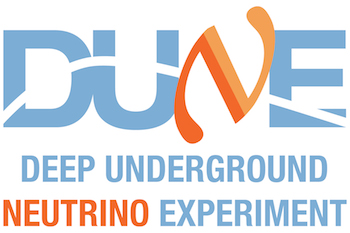 |
The DUNE Experiment Dr J Bracinik, Dr F Gonnella, Dr E Goudzovski, Dr SJ Hillier, Dr NC Lurkin, Mr RJ Staley, Dr AT Watson |
DUNE is a next-generation neutrino experiment, which is being designed to study neutrino oscillations and search for evidence of nucleon decay. It will also be sensitive to neutrinos produced in supernovae within the Milky Way, allowing the core collapse to be studied for the first time.
DUNE will consist of two neutrino detectors, which will be placed in what will be the world's most intense neutrino beam. The "near detector" will be placed near the source of the beam at the Fermi National Accelerator Laboratory in Illinois, while the "far detector" will be 1,300 kilometers away at the Sanford Undergroup Research Laboratory in South Dakota.

The DUNE Far Detector will consist of 4 modules. Each module will be a Liquid Argon Time-Projection Chamber, capable of producing three-dimensional images of tracks and showers produced in neutrino interactions or nucleon decays. The precise and highly-granular information provided by the LAr TPCs will enable the identification and reconstruction of different types of interaction over a wide energy range.

Each detector module will contain 17kT of liquid argon. The modules will operate independently, providing a degree of redundancy.
For further information, see: